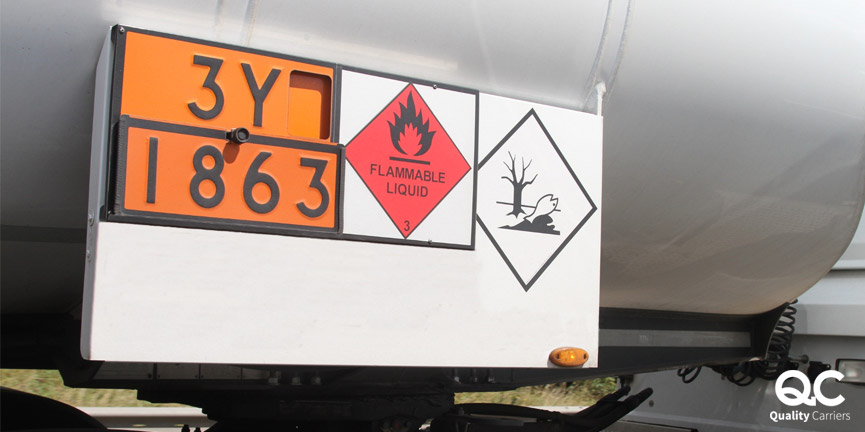Transporting hazardous materials (hazmat) is a critical aspect of modern commerce. These materials are essential in various industries, from chemicals to gases and flammable substances. However, with this importance comes a significant responsibility: ensuring the safe transportation of hazardous materials. This is where Safety Data Sheets (SDS) or Material Safety Data Sheets (MSDS) come into play.
In this blog post, we’ll explore what hazmat transportation is, why it’s crucial, and how Safety Data Sheets are indispensable for maintaining safety throughout the transportation process.
Understanding Hazmat Transportation
Hazmat transportation is the movement of hazardous materials from one location to another. When improperly handled, these materials encompass a broad spectrum of substances that can pose risks to health, safety, property, or the environment. To ensure the safe transportation of hazmat, commercial drivers often obtain a CDL hazmat endorsement, a specialized certification allowing them to transport these materials legally and safely. Examples of hazmat include chemicals, radioactive materials, explosives, and gases. Given the potential dangers, ensuring that hazmat is transported safely and securely is paramount.
What is the Role of Safety Data Sheets?

Safety Data Sheets (SDS), formerly known as Material Safety Data Sheets (MSDS), are vital documents that provide comprehensive information about the properties and potential hazards of chemicals and hazardous materials. These documents serve as valuable resources for individuals involved in hazmat familiarization and safety in transportation, offering critical insights into:
1. Hazards Identification
Safety Data Sheets (SDSs) are crucial in identifying the hazards associated with chemicals and materials. They provide detailed information about the physical, health, and environmental hazards, allowing individuals to understand the risks involved in working with or being exposed to these substances. This identification is essential for risk assessment and mitigating potential dangers.
2. Safe Handling and Storage
SDSs offer guidance on the safe handling and storage of hazardous materials. They provide instructions on adequately using personal protective equipment (PPE), secure storage conditions, and recommended control measures to minimize exposure and accidents. By following these guidelines, individuals can reduce the risk of accidents, spills, and injuries.
3. Emergency Response
In accidents, spills, fires, or exposures involving hazardous chemicals, SDSs are a critical resource for emergency responders. They offer valuable information on first-aid measures, firefighting procedures, and containment strategies. Quick access to SDSs can aid responders in making informed decisions to protect lives, property, and the environment during emergencies.
4. Regulatory Compliance
Compliance with regulations is a fundamental role of SDSs. They are a legal requirement in many countries and are essential for ensuring that businesses and organizations adhere to chemical safety regulations. Properly maintained SDSs help organizations meet their legal obligations, demonstrate due diligence, and avoid penalties or fines associated with non-compliance.
Hazmat Transportation and SDSs in Action

When a company or individual prepares to transport hazardous materials, one of the first steps is to consult the relevant SDSs. These sheets provide a wealth of information that helps ensure safe practices throughout the transportation process:
- Proper Packaging: SDSs specify the appropriate containers and packaging materials for hazmat, reducing the risk of leaks or spills during transit.
- Labeling and Marking: They guide labeling and marking requirements, ensuring that hazmat shipments are correctly identified for all parties involved.
- Emergency Preparedness: SDSs offer insights into emergency response procedures, helping drivers and responders react effectively in the event of an accident or incident.
- Regulatory Compliance: By following the information provided in SDSs, hazmat transporters can maintain compliance with local, national, and international regulations.
In summary, hazmat transportation is a critical but risky aspect of various industries. Safety Data Sheets are pivotal in mitigating these risks by providing detailed information on hazardous materials, their handling, and emergency response procedures. They are indispensable tools for hazmat transporters, ensuring that these materials reach their destinations safely and without incident.
Safety Data Sheets FAQs
Safety Data Sheets (SDSs) are documents about hazardous chemicals and materials. They provide essential data on the properties, hazards, safe handling, storage, and emergency response measures associated with these substances.
Written SDSs are vital for safety, compliance, emergency response, environmental protection, and occupational health. They help users understand chemical hazards, comply with regulations, respond to emergencies, protect the environment, and safeguard worker health.
Safety Data Sheets are regulated by agencies like OSHA in the United States and are governed internationally by the Globally Harmonized System (GHS). These regulations ensure consistent and standardized communication of chemical hazards and safety measures.




